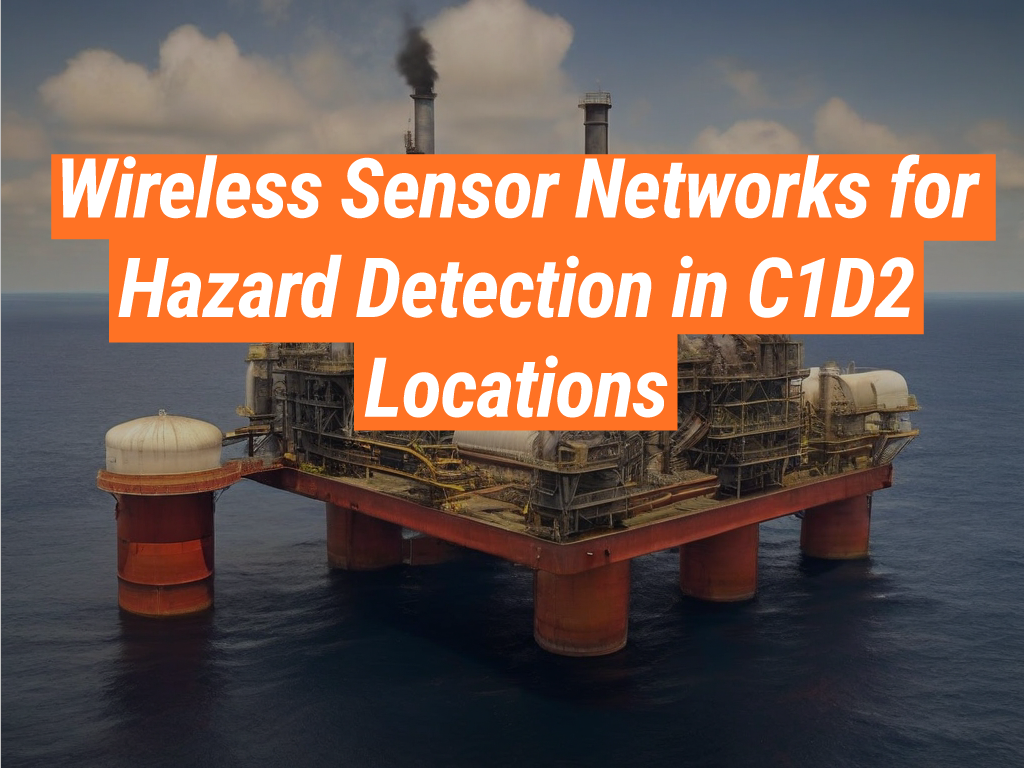As the world becomes increasingly interconnected, the need for robust and reliable hazard detection systems in hazardous environments has never been more critical. This is where companies like Intrinsically Safe Store come into play, providing cutting-edge solutions for hazardous locations. One such solution is the use of wireless sensor networks (WSNs) in Class 1 Division 2 (C1D2) locations.
Before we delve into the specifics, we invite you to visit Intrinsically Safe Store to explore a wide range of intrinsically safe products and solutions tailored to meet your specific needs.
Understanding C1D2 Locations
The National Electric Code (NEC) defines C1D2 locations as areas where flammable gases or vapors may exist under abnormal conditions. These locations can include, but are not limited to, petroleum refineries, gas stations, and paint spray booths. The importance of reliable hazard detection systems in these environments is paramount.
The Role of Wireless Sensor Networks
Wireless sensor networks (WSNs) are a game-changer in hazard detection. They consist of spatially distributed autonomous sensors that monitor physical or environmental conditions. These sensors cooperatively pass their data through the network to a main location for analysis and response.
Benefits of WSNs in C1D2 Locations
- Real-time Monitoring: WSNs provide real-time monitoring of hazardous conditions, enabling immediate response to potential threats.
- Cost-effective: WSNs eliminate the need for extensive wiring, making them a cost-effective solution for large-scale industrial environments.
- Flexibility: We can easily reconfigure WSNs to adapt to changing conditions or requirements.
Case Study: WSNs in Action
A prime example of WSNs in action is their use in petroleum refineries. These environments are rife with potential hazards, including flammable gases and high-pressure systems. By deploying WSNs, refineries can monitor conditions in real-time, enabling them to respond swiftly to any potential threats, thereby enhancing safety and operational efficiency.

Choosing the Right WSNs for C1D2 Locations
When it comes to selecting the right WSNs for C1D2 locations, it’s crucial to consider factors such as network range, battery life, and the type of hazards to be monitored. This is where the expertise of a trusted provider like Intrinsically Safe Store comes in handy. We offer a wide range of intrinsically safe products, tailored to meet the specific needs of hazardous environments.
Wireless sensor networks represent a significant advancement in hazard detection for C1D2 locations. They offer real-time monitoring, cost-effectiveness, and flexibility, which makes them an ideal solution for hazardous environments. As the demand for reliable and robust hazard detection systems grows, WSNs will increasingly play an important role.
For more information on how WSNs can enhance safety and efficiency in your C1D2 location, contact us at Intrinsically Safe Store. Our team of experts is ready to help you select the right intrinsically safe solutions for your specific needs.


























